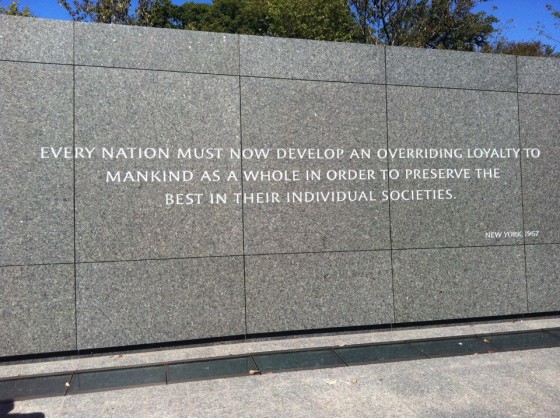
Crossing Over: does immigration policy discriminate?

Does immigration policy discriminate? The White Australia policy is gone – so we might conclude that it doesn’t. And indeed Australia would be unrecognisable to those who created the White Australia policy at the end of the 19th century.
Times change and such racist practices are now a condemned part of the past. Today Australia celebrates the diversity and strength of its people: actively creating pathways and welcoming individuals and families from around the world into its community. Race is not relevant.
That’s not the full story of course. Currently a human rights inquiry is investigating the treatment of children in Australian immigration prisons. These are children from families, or sometimes alone, who have arrived by boat to seek asylum and are most definitely not welcome. With time, it is very likely that what is currently happening to these children will be come to be regarded by the country as a whole as something to be regretted.
However this article is about broader immigration practice and in particular whether broader practices may violate human rights by engaging in discrimination prohibited in international law and inconsistent with national anti-discrimination laws and principles.
When it is said that Australia’s immigration policy is non-discriminatory what is meant is that the policy does not discriminate on the basis of race – either in intent or effect. No longer is the system designed to create a uniformly white – and preferably British – population. Such a uniformity never existed at any point of Australian history, despite the brutality involved in attempting to create it.
While it is certainly worth applauding the end of this avowedly racist past in immigration and national policy, it is imprecise, to describe immigration policy of today is “non-discriminatory”.
Australia is one of a number of countries that run active immigration programs. While I am not sufficiently familiar with those systems to comment on them: it is likely that ‘best practice’ is in many respects similar around the world. The comments here are not therefore concerned solely with the practices of one immigration system – they are concerned with broad patterns in immigration policy across national systems that may be inconsistent with human rights principles.
So does immigration policy “discriminate”?
Discrimination which violates international human rights is not limited to race.
Both international law and a range of Australian laws (and national laws in other countries) prohibit discrimination on a range of grounds. In international law the grounds are open ended:
Everyone is entitled to all the rights and freedoms set forth in this Declaration, without distinction of any kind, such as race, colour, sex, language, religion, political or other opinion, national or social origin, property, birth or other status. (Universal Declaration of Human Rights)
Among the rights all human beings enjoy is the right of equality before the law. Other rights include the right to work, to an education, to social security, to a standard of living adequate for health and well-being, to security in the event of unemployment or disability, to housing, food, and medical care. Further, all human beings are entitled to a social and international order in which all such rights can be realised. Rights such as these are often central to the aspirations of those who seek to migrate and settle in a new country.
Denial of a visa can mean that a person is unable to realise these human rights or discriminates against them in reasonable steps (such as migration) they pursue in order to realise their human rights.
Immigration policy is designed around selection of individuals to meet the needs of the country. By necessity this design results in systematic discrimination on quite a number of grounds mentioned in international human rights law including age; property; language and social origin.

The graphic above suggests that Australian immigration policy has four purposes:
- to build the economy;
- shape society;
- support the labour market; and
- reunite family.
Note that these four purposes range across different parts of what is a complex immigration system. Family reunion is primarily directed to the needs of couples (through partner visas) and to a lesser extent parents and children. A human rights tick on this one: everyone has the right to marry and found a family (Universal Declaration of Human Rights article 16). Of course this right is undermined if you are unable to live together in the same country.
The phrase “shape society” is odd and it is not easy to find a published explanation. It reappears in high level descriptions of the purposes of the immigration program on the official immigration website, but is not defined in easily accessible documentation. How is society being reshaped? What is the rationale for such reshaping? Without further information it is not possible to consider any human rights implications of such “reshaping”.
The following examination relates particularly to the “skill” stream of the immigration program.
Having money and a business background can make getting an Australian visa much easier. This may make it feasible to obtain a Business Talent Visa that leads ultimately to permanent migration. This amounts to discrimination on prohibited grounds of social status and property. While rationalised in terms of meeting the needs of the country, essentially, for most with sufficient wealth, an Australian visa can be bought from the Australian government. 7010 business investment visas were issued in 2012-2013. This was about 5.4% of those issued a skilled visa in that year.
For those without that kind of property or social status the primary route of entry into permanent residence in Australia is general skilled migration through “Skill Select”.
Skill select is a complex filter designed for filtering human beings. Most human beings won’t get through the filter. The first hurdle is having a relevant “skill”. The poetically or artistically inclined need not apply. Doctors, lawyers, engineers and accountants however are among those who are welcome … While ‘profession’ is not explicitly mentioned as a ground of discrimination, obtaining qualifications of such kinds is not available on a basis of equal opportunity to everyone. They are, at the least, indirect markers of social status.
The complexity of the system is however underlined by the availability of different streams for which different ‘professions’ are relevant. State or employer sponsored employees are drawn from a much broader pool of ‘skills’. In the skills stream overall 58% of those granted visas in 2012-2013 were considered to be professionals, while a further 5080 (or 8% of the stream) were “managers”. Trades and technical occupations accounted for 28% of the skill stream.[1]
However there are layers of filtering. First there is a basic English test (IELTS level 6). Without functional English, entry becomes impossible through this mechanism. It has perhaps been forgotten that even at the height of the White Australia policy it was poor form to explicitly discriminate on the basis of race. To achieve a racial result that was not so impolite, the system used a “dictation test” in a European language to keep out the unwanted. This is not to suggest that this is the intent of modern day policy, but it does raise the question of whether language tests unintentionally perpetuates racially biased outcomes. Language is an objective characteristic of which ‘race’ is a more subjective classification. This is discussed more fully below.
If your health isn’t 100% you could be out of luck again. The following are explicitly among the kinds of conditions that might rule out an applicant:
- intellectual impairment
- HIV infection
- renal disease or failure
- cancer
- Alzheimer’s/dementia. (See here)
Imposition of conditions of this kind would amount to disability discrimination in Australian law. Their family’s experience of this kind of discrimination is described by Sharon Ford and Jan Gothard who were denied a visa because their child had downs syndrome. Another family tell their story of discrimination because their child is autistic in a petition on change.org. Both families challenge the rationales used to exclude them and their children. Alecia Simmons of the Sydney Morning Herald reports on a 2010 Senate Inquiry into immigration discrimination on the grounds of disability. She draws the obvious nexus with early 20th century eugenics which sought to exclude the “feebly minded”, among others, from society.
Gordon Brown, with his visual impairment, Helen Keller and Stephen Hawking would be denied residency in Australia.
Why? Because their disabilities are seen as imposing too much of a financial burden on government services and supports. The contribution that they could make to Australian society is not considered.[2]
If you are over 49 you are too old. Yet, age discrimination is unlawful in Australia.
Then there is the points test. This applies particularly to general skilled migration. Again it is inherently discriminatory.
The basic requirements are for the potential applicant to have 60 points awarded for: age, English language skill, partner status, education, Australian education, employment and others.
The English language requirement is considerably beyond a “working knowledge” requirement. It’s demanding even for university graduates to meet.
Graduation from a Bachelor or higher level university qualification results in significant points.
So the policy systematically discriminates in favour of the well-to-do, the educated, the young, the healthy, those with access to financial resources, those who speak English well. Direct financial cost is not a trivial factor either. At time of writing the cost of just applying for permanent migration is several thousand. This is many times the annual income of the world’s most poor.
Let us say that Parin, a farmer in Thailand, would like to migrate to Australia. He is 40 years old and has only primary education. He has limited financial resources, but has many agricultural skills. His knowledge and experience are valuable to his community. Let us say that, unusually for his local community, he has competent English. Without a post-secondary qualification Parin would already be ruled out. Further let’s assume that Parin earns about the Thai minimum wage which in 2013 was set at $10 per day. It would take Parin two years to earn the income required to make an application. He is OK on age, but would find it difficult to get the minimum points without both quite competent English and a university degree. Finally he is unlikely to be able to access the right occupational qualification.
For the poor across the world, those who are most likely to have a strong need to migrate, the barriers erected by the system will are likely to be impossible to overcome. When comments are made about “economic migrants”, said to be misusing the asylum process, this is part of the context. The law may be stacked against you if you want to migrate. There is no queue you can join.
This would not have been true in the post-war immigration years, which although limited on the basis of race, was more open in other ways. Hundreds of thousands entered Australia with no english, no education or skills and virtually no money. Yet the period also was highly successful both for Australia and the migrants involved.
It is some comfort to conclude that we are no longer overtly racist in our immigration policy. That sense of comfort is diminished by the reality that immigration policy discriminates against the poor, the aged, the infirm, and the socially marginalised.
All of the immigration arrangements outlined above are rarely questioned. Rather, they are projected as elements of a “fair” system in the national interest that can enjoy the support of the population at large. Surely a nation is entitled to decide who it allows to settle on its territory? Yet all of this would be unacceptable – indeed unlawful – if directed towards citizens and even non-citizens in virtually any other field. Outside the field of immigration, discrimination of this kind has been addressed by laws and tribunals through which people can get redress and the discrimination prevented.
The additional ingredients of lack of citizenship and the border makes such discrimination “normal”, “acceptable”, “reasonable”.
It is possible to imagine other immigration arrangements that are at least not discriminatory in these kinds of ways. An immigration lottery, for example, would not have the kinds of problems that are outlined above. It would likely be a cheaper system to run and at least be no less fair than the current lottery of birth that means some human beings live in affluent security while others are surrounded by poverty and insecurity.
The lottery system is not as crazy an idea as it may sound to some. The United States uses this system to enable people who would otherwise be locked out a chance of a new life.
The United States Department of State has announced the Diversity Visa Lottery for 2015 (DV2015). This program is sometimes referred to as the “Green Card Lottery.” Each year this program makes 50,000 permanent resident visas available through a lottery to persons from countries with low rates of immigration to the United States.
To qualify, applicants must have either a high school education or its equivalent, or be able to meet minimum training requirements. Each applicant must also be able to show that they were born in a country eligible for this year’s Diversity Visa Lottery.
On language alone (a ground of discrimination prohibited in the Universal Declaration of Human Rights), we have to conclude that immigration policy does discriminate. Age, property, social status and disability also seem to be at issue. Next we examine race.
Backdoor race discrimination?
Discrimination law defines two types of discrimination: direct discrimination and indirect discrimination. Direct discrimination happens when discrimination occurs directly on a protected grounds. For example if a criterion of race or nationality were applied in employment it would be direct discrimination. The following definition of racial discrimination in the Racial Discrimination Act 1975 (Australia) pretty much speaks for itself:
9 (1) It is unlawful for a person to do any act involving a distinction, exclusion, restriction or preference based on race, colour, descent or national or ethnic origin which has the purpose or effect of nullifying or impairing the recognition, enjoyment or exercise, on an equal footing, of any human right or fundamental freedom in the political, economic, social, cultural or any other field of public life.
The definition of indirect discrimination is more convoluted but basically it is discriminatory to impose a condition which has the effect or purpose of impairing enjoyment of a human rights and that condition has greater effect on a person depending on their race or other protected ground. So to consider if something is indirectly discriminatory on the ground of race we need to consider whether it impacts on people of one race more than another. A good example is a language requirement which prima facie is likely to have that kind of indirect effect.
The top ten immigrant source countries in 2012-13 were in order: India (40,000), China (27,000), United Kingdom (22,000), Philippines (11,000), South Africa, Vietnam, South Korea, Irish Republic, Malaysia and Sri Lanka (5000). Of these India, the United Kingdom, the Philippines, South Africa, the Irish Republic, Malaysia and Sri Lanka all have an English language background that may contribute to the results. However the factors that play out are complex. They include conditions in a migrants home country and historical migration patterns as well as how migration policy constrains individual choices. So working out whether this kind of pattern is telling us we have a discriminatory result on the basis of nationality (race) is difficult. It’s interesting to note that by comparison Chinese numbers of international students are significantly higher than Indian students.[3] Many such students would potentially wish to stay on longer. The lower levels of Chinese migration, may impact on Chinese students, for example. In fact the country distribution looks very different to the permanent migration pattern. In order: China, India, South Korea, Brazil, Thailand, Saudi Arabia, Nepal, Vietnam, Malaysia, Colombia … While language is also a requirement, the IELTS level 6 is lower than the level 7 or 8 required to get 60 points for migration. i.e. up to one third of the points required for migration can come from English language.
Whether immigration policy discriminates on the basis of race merits further study.
What’s clear enough is that immigration policy discriminates in ways that violate human rights standards on other grounds. It violates human rights principles by discriminating on the basis of age; language, social status and disability. In all these ways migration policy appears to violate international human rights standards.






